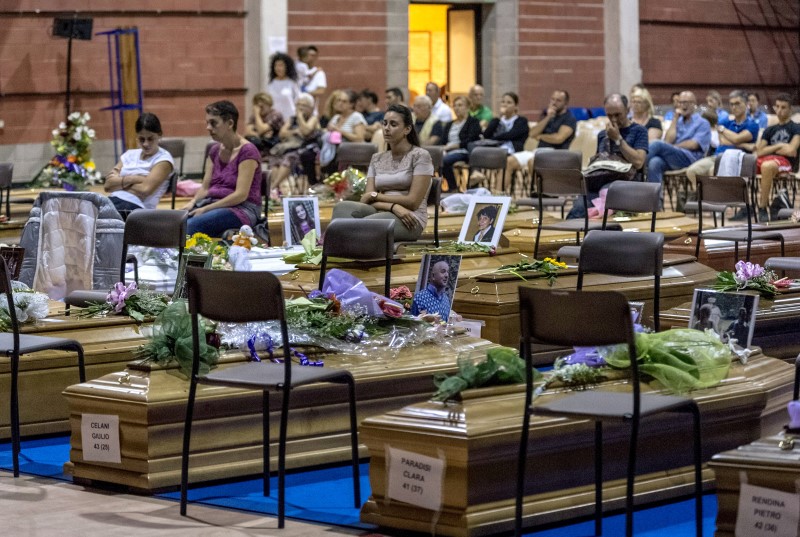
By Matteo Berlenga and Iona Serrapica
AMATRICE, Italy (Reuters) – Italy hurriedly revised preparations for a mass funeral for earthquake victims on Tuesday after protests by bereaved relatives, as crews continued to dig for bodies under mounds of rubble.
Family members had objected to plans to hold the ceremony in an aircraft hangar in the town of Rieti where the bodies had been stored. The funeral will instead be held in Amatrice, the place hardest-hit by last week’s 6.2-magnitude quake.
Of the 292 confirmed dead, 231 were found in Amatrice, which was left in ruins.
A number of foreigners were among the dead, including 11 Romanians and three Britons.
Prime Minister Matteo Renzi, President Sergio Mattarella and Romanian Prime Minister Dacian Ciolos were scheduled to attend the funeral at 6 p.m. (1600 GMT), the Civil Protection Agency said.
Tuesday’s funeral is for some three dozen of the victims. Many of those who died in Amatrice on Aug. 24 were not residents and their funerals are being held in their hometowns.
Workers used heavy machinery to gravel over an area on Amatrice’s outskirts where the ceremony will take place within sight of shattered buildings.

Coffins of some of the victims of the earthquake in central Italy are seen inside a gym in Ascoli Piceno, August 26, 2016. REUTERS/Adamo Di Loreto
Marquees were still being erected for the funeral ceremony as the first caskets arrived. A hearse and a van carrying at least four coffins had to be turned away until the work could be completed.
In the center of town emergency workers used mechanical diggers and bulldozers to search for bodies, an unknown number of which may still be trapped beneath dust and debris.
It is the second state-sponsored funeral in three days. On Saturday rites were held for victims of the quake from the adjoining Marche region. Amatrice is in the region of Lazio.
Controversy has grown over poor construction techniques, which may have been responsible for many deaths.
Investigators are looking into work done on the bell tower in Accumoli, which was recently restored but collapsed during the quake onto the home of a family of four, killing them all.
Italy sits on two seismic faultlines. Many of its buildings are hundreds of years old and susceptible to earthquake damage.
Almost 30 people died in earthquakes in northern Italy in 2012 and more than 300 in the city of L’Aquila in 2009.
(Additional reporting by Antonella Cinelli; writing by Steve Scherer; editing by Andrew Roche)
